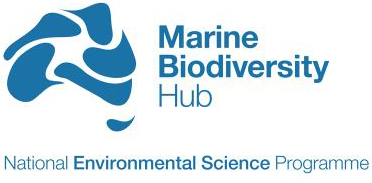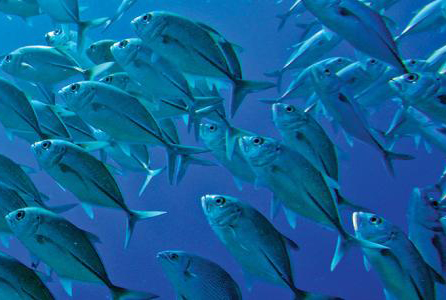Department of the Environment – The National Environmental Science Programme
Professor Nic Bax
Dr Nicole Hill, Dr Rick Stuart Smith, Dr Russel Thomson, Dr Vanessa Lucieer and Dr Sarah Jennings (Tasmanian School of Business and Economics)
The National Environmental Science Programme (NESP) Marine Biodiversity Hub provides scientific information and advice to support decision making in the marine environment.

IMAS is involved in the following projects being conducted as part of the Marine Biodiversity Hub.
Project C2 - Continental-scale tracking of threats to shallow Australian reef ecosystems
Project leader: Graham Edgar
High quality, standardised monitoring data, ecological indicators, and data streaming protocols are key elements in effective marine and coastal conservation, management and reporting. This project is taking a range of innovative approaches to improving these products and processes.
In this project, data will be integrated from Australia's three largest shallow-water monitoring programs: the Australian Institute of Marine Science Long Term Monitoring Program; Reef Life Survey; and the University of Tasmania Long Term Marine Protected Area Monitoring Program.
Project leader: Neville Barrett
Rocky reefs form an important habitat on Australia's continental shelf and are recognised in marine bioregional plans as Key Ecological Features (KEFs) that support a range of benthic and pelagic marine communities, including migratory species.
Despite their nationally significant status, little is known of the extent and nature of these systems beyond their value to the fishing industry. The extent of rocky reefs is poorly delineated across the continental shelf and in Australia's marine reserve network and the impact and rate of recovery from pressures is virtually unknown. This information is critical for evaluating the need for, or consequences of, management strategies.
This project will collate data from government, industry and research agencies to map the extent and structure of rocky reef habitat around Australia's continental shelf, and identify critical gaps in this knowledge to be filled by targeted surveys.
Theme D - Understanding biophysical, economic and social aspects of the marine environment
Co-Leader: Neville Barrett
Nationally consistent and cost-effective tools and approaches are being developed to survey, monitor and understand impacts and risks in the marine environment. These will enhance the capacity of researchers and industry (oil and gas, fisheries) to collect information that supports decision-making.
Federal and state agencies involved in biodiversity management will help to identify and develop elements of a national marine monitoring strategy (logistics, statistics and data infrastructure). Opportunities will be identified for improving co-management of the marine estate for conservation, fishing, oil and gas and other marine users.
The Marine Biodiversity Hub is funded by the Australian Government's National Environmental Research Program (NERP) administered through the Department of the Environment.
IMAS hosts the Hub and additional partners are CSIRO, the Australian Institute of Marine Science (AIMS), Geoscience Australia, Museum Victoria, the University of Western Australia, and Charles Darwin University.
Collaborators include Integrated Marine Observing System (IMOS), the Australian Fisheries Management Authority (AFMA), the Australian Petroleum Production and Exploration Association (APPEA), the Great Barrier Reef Marine Protection Authority (GBRMPA) and State researchers in Victoria, New South Wales, Western Australia and the Northern Territory.
Interested in this project?